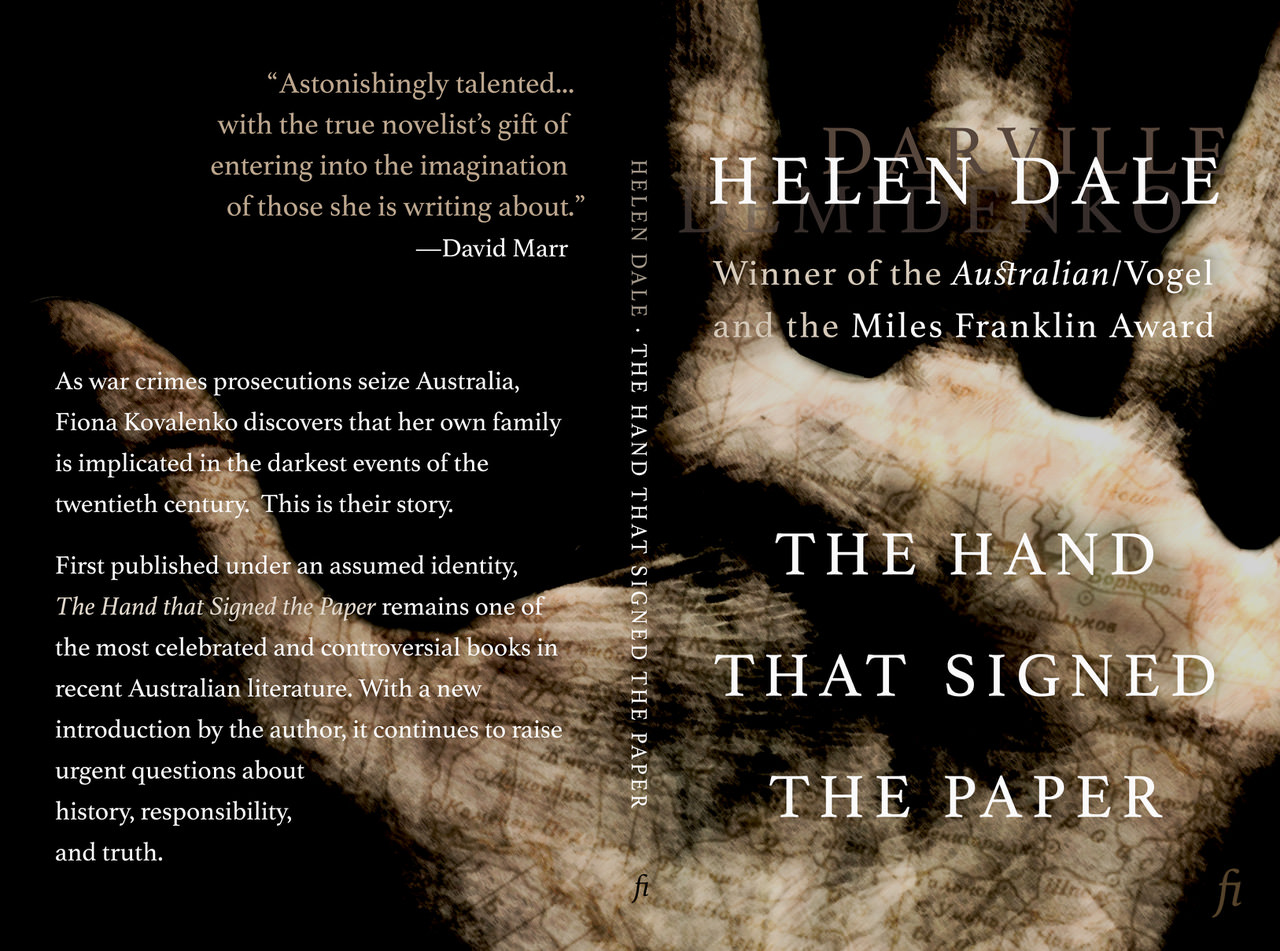Identity
Against Cultural Protectionism
We are living in a time where the old models are changing, where the access to new styles and ideas is greater than ever.

Like most of my generation, I was introduced to Leonard Cohen’s hymn to heartbreak, ‘Hallelujah,’ via its perfected version by Jeff Buckley. Buckley’s incredible voice echoed and shone through the haunting atmospherics of his sparse guitar, like a lonely angel fallen from the heavenly choir. It was the kind of song that would stop a conversation, stop your train of thought—something sacred. Its meditation on the beautiful melancholy of human life was only accentuated by Buckley’s untimely death, and passing into legend, soon after its release.
Like Buckley, the song sat in the subcultural collective consciousness, something those of us at the tail end of Generation X would add to mix-tapes for our crushes, or learn to sing around the fire. Perhaps it was one of us who, having grown up and gone into film, suggested Rufus Wainwright’s version of the song for the soundtrack to Shrek. But however it happened, the song soon exploded into mainstream millennial consciousness. It became a fixture of talent shows and reality TV—not to mention the buskers. Oh, the buskers. Even today (or at least, before the lockdowns), it seems as though every second busker has a version, to the point where even the most talented singer’s first notes are enough to raise groans of contemptuous familiarity. But for those of us who remember Jeff, the sin isn’t merely that it’s overplayed. It feels more like something akin to blasphemy. Buckley’s version was so beautiful, and the soundtrack to so many key moments in our coming-of-age, that the populist’s pale, earnest attempts are like crossing uninvited into sacred space.
I started thinking about Buckley and ‘Hallelujah’ in an attempt to empathise with people who get upset about cultural appropriation. Of course, I recognise the imperfectness of this comparison, not to mention the irony—that Buckley’s version was itself a cover. And—to the extent that a Canadian Jew, a grungy New Yorker, and an international assortment of buskers can—everyone in this story shares the same general culture. Can there be such a thing as sub-cultural appropriation? And in that case, were any die-hard Cohen fans upset when they heard Buckley’s version? (I suspect not.) But reflecting on these questions has brought out some greater nuances in the debates over cultural appropriation that continue to arise with regularity. The mutation of ‘Hallelujah’ from Cohen through Buckley to the X-Factor offers a microcosm of the way that cultures shift, and an important distinction between two types of cultural appropriation—an organic, artistic kind, and a more commercialised kind. This distinction raises important questions over the nature of what a culture actually is, and how meaningful practices get packaged into something that can be bought and sold. By focusing on their discomforts with the second kind, opponents of cultural appropriation risk falling into a narrative of exclusivity and rigid divisions that close us off from creative and cultural development—the very essence of the diversity they claim to protect.
Owning symbols, owning styles
The problem begins when we take a cultural trait or signifier—like a hairstyle or a style of music—and try to restrict it to an abstract group. Because while cultures are continuous, the elements that comprise them are extremely fluid. Cultures are always evolving. Like human individuals, they are processes in constant flux, in dynamic dialogue and interchange with others. Except for the tiniest pockets, there have never been isolated cultures. The history of humanity is the history of the transmission of designs, art, technologies, and especially of ideas and stories. Chaucer’s poetry ultimately owes its structure to the Sanskrit epic, the Mahabharata. The modern song, like ‘Hallelujah’—together with its subject of romantic love—was developed in the Middle Ages by Provençal troubadours, who took inspiration from Sufi poets, who themselves combined Semitic concepts of God with ancient Persian aesthetics.
A common example in contemporary debates is dreadlocks, with the assertion that white Westerners are unfairly appropriating a black or African hairstyle. Yet dreads aren’t a pan-African hairstyle, even if many of that continent’s diverse communities do sport versions of braids or matted hair. But even within the black Jamaican communities most associated with them—and from which they derive their name—their adoption is a recent event, arising with the birth of Rastafarianism in the 1930s. And of course, Rastafarianism—including the dreadlocks—is an appropriation and reinterpretation of ancient Hebrew scripture to fit the needs of an impoverished and long-exploited community. Finding solace in the stories of the ancient Judean ruling caste’s exile from Zion to Babylon, Rastafarians built a spiritual black liberation movement, taking the Ethiopian emperor as its symbolic messiah. Ras Tafari—or Haile Selassie, as he became—represented a self-ruling black community who had never been enslaved, although ironically, he thereby represented perhaps the only black African culture with no connection to the New World (an irony enriched by the fact that Selassie’s half-hearted attempts to abolish Ethiopia’s own ancient institution of slavery were only completed after his overthrow by the colonising Italian fascists).
Nevertheless, Rastafarian ideas and images resonated with many black people around the world, particularly those in touch with the Jamaican diaspora in Britain and the United States, and many adopted dreadlocks along with the religion. But many others adopted them more as an aesthetic, at first associated with the Rasta and reggae-music subculture, but soon spreading beyond. A few white people also came to adopt the style. Some, no doubt, were attracted simply by the look, but many had a sympathy with Rastafarian ideals. Although the Rasta religion was devised by and for black people, in Britain the punk community in particular shared its distrust of the establishment, and there was a lot of overlap in reggae and punk venues, sounds, and aesthetics. As members of different communities came to associate, they naturally adopted elements of each other’s styles.
Similar cultural and aesthetic overlaps marked other cross-pollinations, such as the evolution of sound system into rave culture, both examples of a do-it-yourself attitude that defied the corporatised mainstream of the ’70s and ’80s. One strong current of rave culture was the Goa scene, which in the ’90s began to recreate (often illegally) the outdoor psychedelic dance parties that had developed in the hippy communities of Goa, in India. Dreadlocks also became common in the mostly-white Goa scene, though it’s debatable whether these were imitated from their black compatriots, or from the Shaivite sadhus of India, who had been wearing dreadlocks (and ceremonially using hashish) for thousands of years (indeed, dreadlocks and matted hair have long been symbols of asceticism—and by extension, purity—in many cultures).
It’s a rather blinkered position, then, to say—as many activists do—that people of African descent have a monopoly on dreadlocks, regardless of whether they are practicing Rastafarians or not. The example of dreadlocks, therefore, already throws some uneasy questions in the way of who owns a cultural signifier. But it also shows the short-sightedness of a restrictive attitude. Reggae and punk, jungle and Goa, are just a few of the progressive cultural movements that emerged in the late 20th century, and which flourished through the coming-together of different peoples in a cultural melting pot. Not only were whites who adopted dreadlocks, for example, signalling an appreciation and admiration of black culture, they were also showing their own communities that the new styles were worthy of respect and embrace. Far from exploitation, they marked the beginnings of a cultural fusion—one that established inclusiveness as a core value. Since such inclusiveness was—and is—resisted by a vocal proportion of the mainstream, it seems odd that those most ostensibly committed to challenging that mainstream ask their allies to keep their distance. But asking people to stay strictly within their inherited cultural bounds doesn’t just threaten creative diversity, it’s socially and politically dangerous: that way lies apartheid. And like apartheid, it grows out of a very simplistic view of what race or culture is.

Beyond black and white
Apartheid—“separateness”—between blacks and whites has only ever been a codified, national policy in one country—South Africa—although many, perhaps most, states have practised some form of ethnic segregation over their history. South Africa was and is an incredibly diverse country, comprising dozens of indigenously African tribes alongside immigrants from different parts of Europe, as well as the Indian subcontinent, who have been settling there for over 500 years. But the Apartheid laws brushed over such diversity, creating two broad categories of Black and White, based on whether one’s ancestors were African or European respectively (with smaller categories for people from Asian backgrounds, as well “Coloureds,” which included anyone who didn’t fit into a specific group, such as people of mixed heritage).
A similar simplification of race and culture underwrote the American South’s Jim Crow laws, which also segregated the population into black and white (using the “one-drop” rule to dispense with the need for any third category). Race was viewed as something essential, something physical that (almost always) was obvious from one’s appearance. While there were some cultural differences—such as in dialect, dress, and cuisine—both within and across racial categories, these didn’t form the same basis for discrimination, and in any case were somewhat mutable; both blacks and whites code-switched from context to context, and differences in fashion tended to reflect social class rather than race per se.
This binary division between black and white permeates American consciousness even today. For years, I’ve noted a subtle racism in even the most liberal Americans, a simplistic racism cast in literally black-and-white terms. Americans who consider themselves actively anti-racist throw about phrases like “she dresses like she’s black”—implying that there’s a way for blacks, and only blacks, to dress. While the overt argument is against appropriation by whites, the judgemental tone also seems to imply not only that blacks should only act in their “own” way, but that they couldn’t possibly accept a white person into their scene.
I often encountered this type of white liberal American when I lived in the UK, where, on visiting my little town, they would announce just how open and cosmopolitan they were by asking (loudly): “where are all the brown people?” As well as ignoring the prominent Indian and Pakistani communities, they also overlooked the less obvious but equally real cultural and linguistic diversity. Walking down my street on any given day, I might hear Spanish and Italian, Polish and Lithuanian, Urdu and Punjabi, Greek and Turkish, not to mention several English dialects. And although the outward differences of some of these groups often blur, the cultural differences between them nevertheless result in very different everyday lived experiences, including both positive and negative discrimination.
I sometimes wonder if the American tendency to oversimplification comes not only from its history of segregation, but also from its having an exceptionally uniform dominant linguistic culture. Although the US hosts hundreds of languages, American public life is extremely monolingual for a country of its size, and—with the possible exception of Southern and African-American Vernacular English—even its dialects and accents are in decline. Aside from Spanish, most speakers of a second-language restrict its use to home life or Chinatown-like ghettoes, since there is little expectation or incentive for English-speakers to broaden their linguistic horizons.
But strangely, some woke activists seem to imply it should stay that way. In one of Conor Friedersdorf’s columns, he notes a case where a Hispanic woman accused a white man of cultural appropriation for using the word fútbol in casual conversation. But in true multilingual communities, interspersing one’s speech with foreign words is the way that—in the short term—one learns a new tongue, and—in the longer term—how new languages are born. Meanwhile, languages themselves are undergoing a constant evolution that is nearly impossible to arrest (just ask the Académie Française). The primary driver of such evolution is the naturalisation of loanwords; for example, “football” becomes fútbol.
Much of the fight against cultural appropriation, it seems to me, is an attempt to arrest the absorption or assimilation of a minority culture into a larger one. There are legitimate reasons for this, including the very survival of beliefs and practices that a group deems valuable. Jewish and Sikh communities are two prime examples, combining internal discipline and a focus on tradition to maintain vibrant enclaves in the midst of more populous cultures. Carried to an extreme, this same tendency amounts to an Amish or Hasidic attempt to pause time. These may be no less legitimate forms of life for all that, but—we must ask—is this what critics of cultural appropriation are calling for?

Culture, ownership, and profit
However, the really pressing issue for most critics is when a minority has its culture borrowed—even sympathetically—but its members find they remain segregated, unable to integrate even while their cultural signifiers are mainstreamed. Most enraging, of course, is when the appropriators use those styles or signifiers to make profits that are unachievable by their originators. Some activists have therefore asked whites who “consume black culture” by dancing to blues or R’n’B music to make a donation to funds for “reparations.” And this probably relates to why Buckley and all those X-Factorites would never be accused of appropriating Leonard Cohen—because Cohen got royalties.
So the question becomes, who owns the music? But there’s a crucial difference between ownership of a song and ownership of a style of music. It already becomes problematic if we try to assert that, for example, a proto-hip-hop artist like Gil Scott-Heron has a claim to everything that came after—because what about the funk and blues that influenced him? Someone might counter that all of these styles arose out of black communities, but that takes us back to an essentialist concept of race. Does hip-hop belong to all—and only—black Americans, even those who don’t enact that heritage? What of an artist like Eminem, who came of age in the Detroit hip-hop scene, and was then mentored by Dr. Dre? Does he have less claim to hip-hop than a 60-something black jazz purist in Harlem who detests rap? By falling onto an essentialist understanding of race, we not only erect unnecessary barriers, but overlook how culture is actually lived and created.
Until fairly recently, folks didn’t consume culture so much as make it. People would gather to play the “standards,” adapting them as they went along. Imitation was flattery, and no one owned the songs. To the extent that one had to be initiated into a community in order to learn and therefore perform the music, then to that extent particular tunes and styles were inseparable from linguistic/social/racial groups. But the development of jazz and samba, to name just two, show the positive side of what happens when different groups combine, share, and grow together.
The current mindset, on the other hand, has developed alongside the idea of intellectual property, which brought about the possibility of profit, and therefore, of exploitation. In essence, critics of cultural appropriation are trying to rectify such exploitation by claiming collective ownership of the “intellectual property” associated with a particular community. But if that sounds like a quixotic task in its own right, it makes even less sense in the 21st century, where new technologies of creation and distribution are changing the very way we think about intellectual property, and how creators can collaborate in the arts, as much as in software, business, and more.
Rather than being progressive, critics of cultural appropriation are trapped in a regressive essentialism that commodifies the activities and products of human culture. This is symptomatic of what the German philosopher Martin Heidegger called modernity’s “levelling down” of the world’s richness into a homogeneity of objects. In previous eras, he believed, the world was comprised of lived relationships. A song was not a “thing” that could be bought or sold, but something we did, and that in so doing, not only invoked its history, but created it—and thereby created ourselves. All culture—all arts, crafts, technologies—is like this. By making and sharing it in a specific time and place, we form ourselves and the world around us. But in the present age, we have become mere consumers. Everything—music, hairstyles, clothing patterns—is for sale. Nothing requires an initiation; an Amazon account will do the trick. And as we change our fashions like we change our clothes, we become disconnected from our connection to our time, our place, our community—ourselves.
This much could be an argument against cultural appropriation, and it is—that is, against an unthinking, commodified form. It’s a punch to the gut to see something you grew with and through—be that your dreadlocks, hip-hop, or even ‘Hallelujah’—packaged up and sold back to you. To see something that you came to through a process of initiation or (self-)discovery adopted as a fad and discarded just as quickly. To see people motivated solely by money profiting off something that you freely shared with those you love the most.
But we can’t let this close us off to authentic sharing and cross-pollination. For those upset by the commodification of culture, the answer is not to retreat into rigid categories. We are living in a time where the old models are changing, where the access to new styles and ideas is greater than ever. The demands of so-called progressives for protectionism and segregation misunderstand how culture actually works. To insist on who can and who can’t find a symbol meaningful, or connect to an idea or an aesthetic, is both ignorant and arrogant—and builds dams across the streams that nourish diversity.






